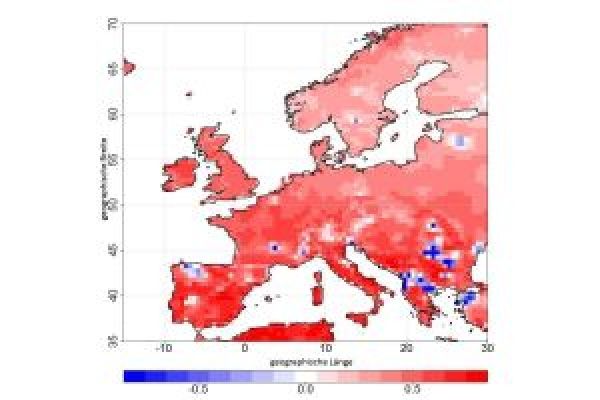Climate is changing: Droughts, floods, and extreme weather events influence agriculture, economy, and society. Improved adaptability of industry and society to the future climate, however, requires reliable statements on medium-term climate development, in particular for certain regions. Researchers of Karlsruhe Institute of Technology (KIT) and partners in the MiKlip project have now developed such a model that can be used to make more precise regional climate prognoses for Europe for a period of up to ten years.
What will the weather be like tomorrow or in the next two weeks? Prognoses of short-term changes of the atmosphere and seasonal forecasts are already made on a regular basis. Climate prognoses for a decade, by contrast, reflect tendencies for a medium term of up to ten years. Within the MiKlip (Medium-term Climate Prognosis) project, KIT and partners of the German Weather Service (DWD), Max Planck Institute for Meteorology (MPI-M), Hamburg, and other universities have developed a forecast system to calculate such climate prognoses of regional resolution, i.e. for regions of 25 km in dimension.
The global climate prognoses that are refined by COSMO-CLM are based on the global climate model ECHAM of the MPI and differ from long-term projections, such as the IPCC fifth assessment report, by considering as a starting condition the “memories” of various components of the climate system: Atmosphere, ocean, land or ice mass react to external impacts, such as carbon dioxide or temperature, at different rates. For example, the atmosphere stores heat for a few days only, whereas sea ice stores heat for one to two years, and the ocean for up to 100 years.
Continue reading at Karlsruhe Institute of Technology
Image via Karlsruhe Institute of Technology


